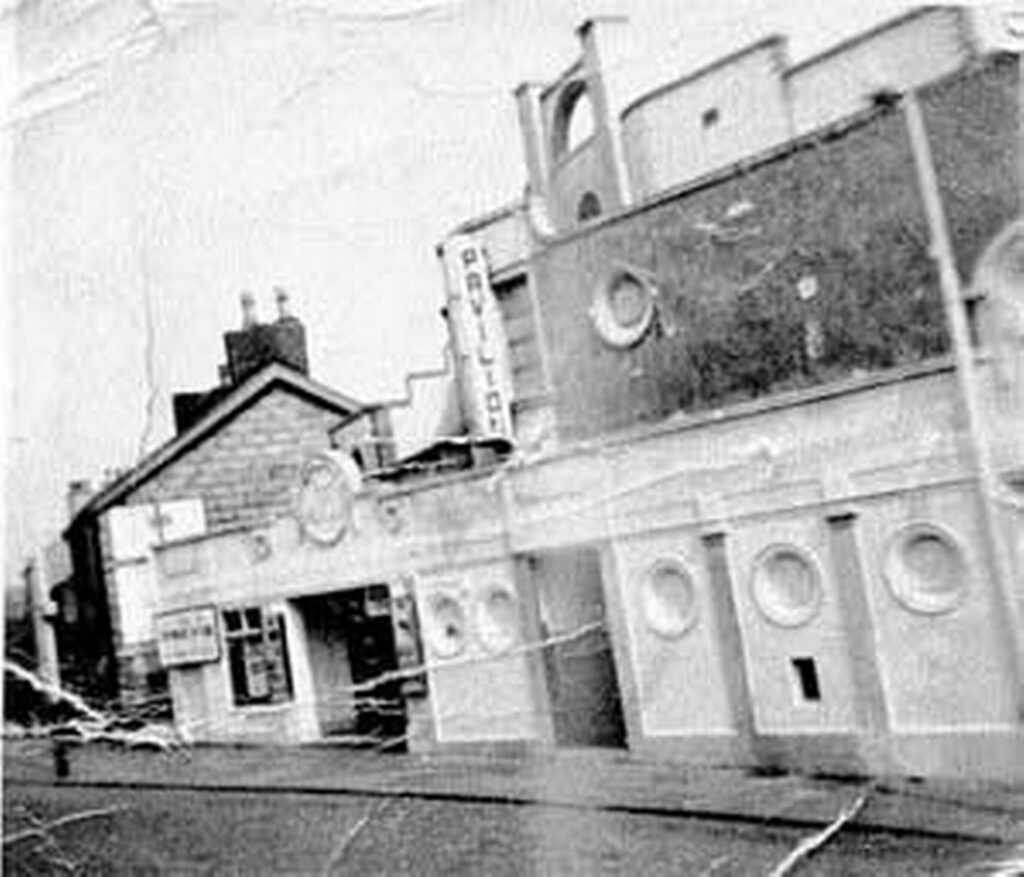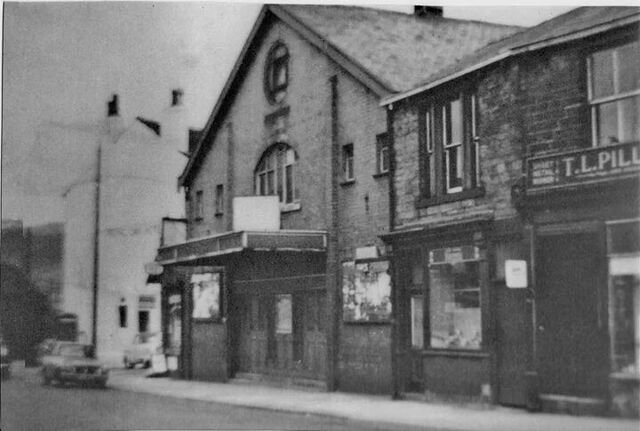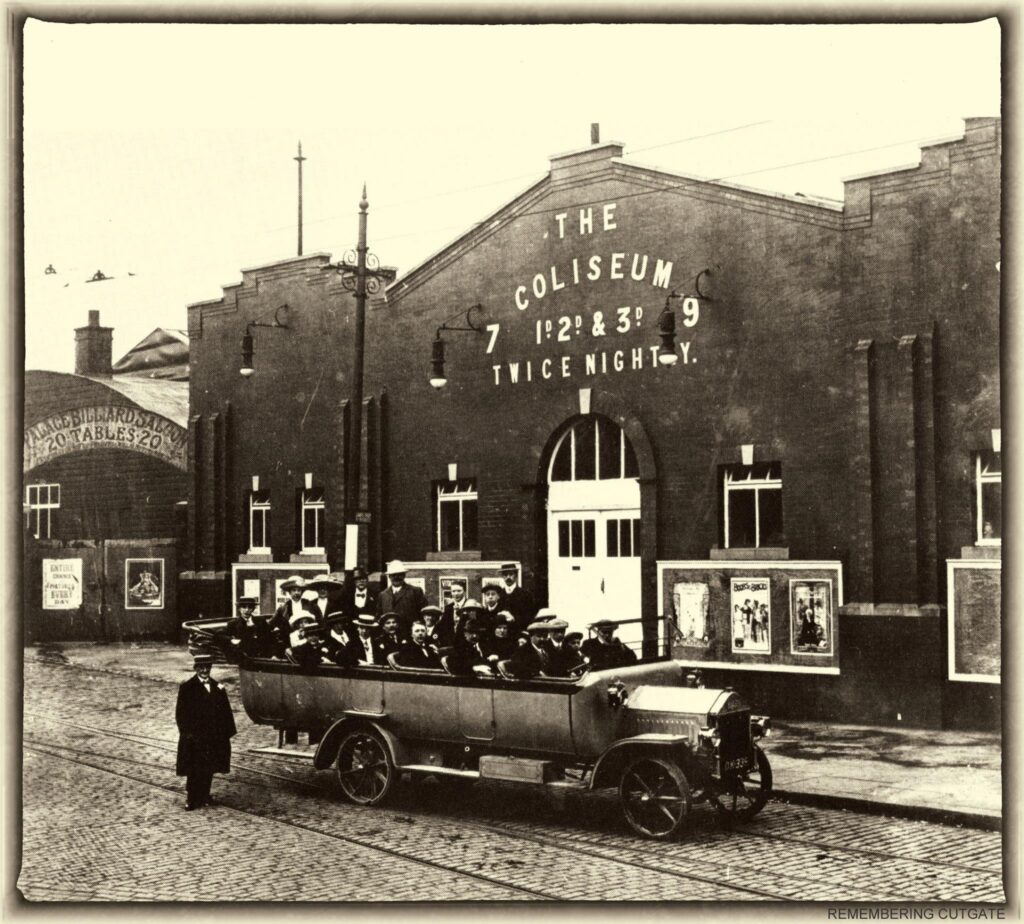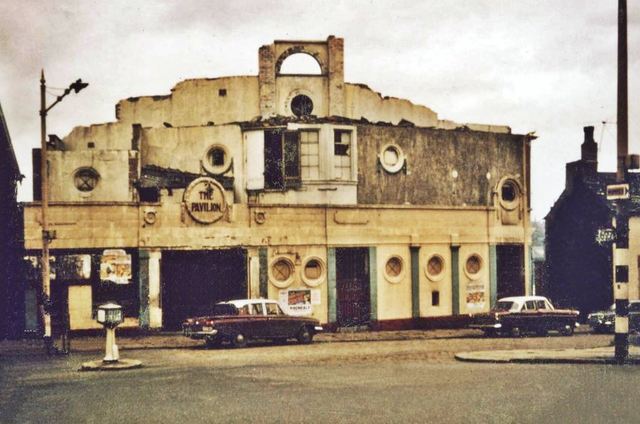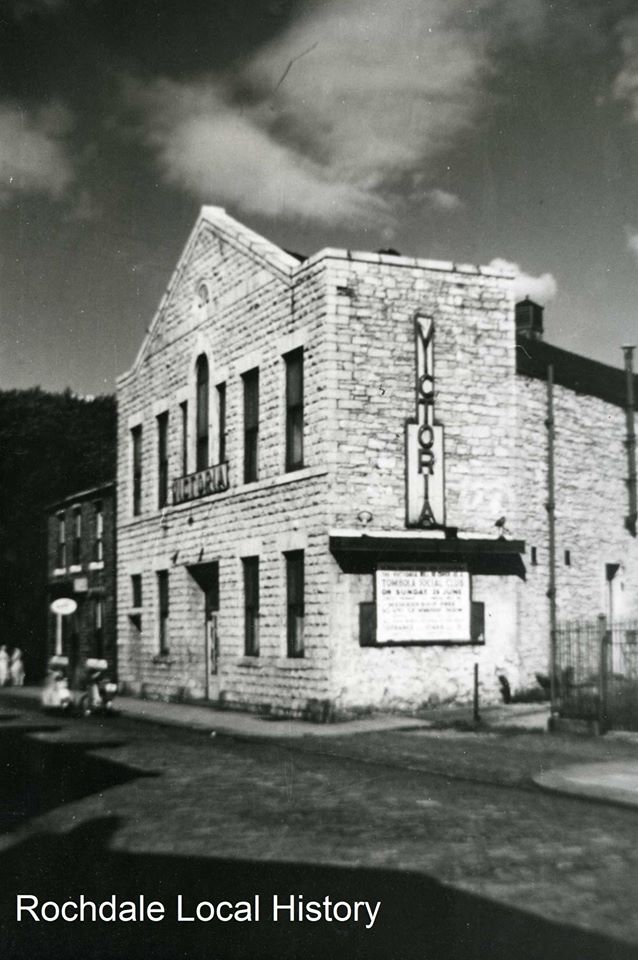Cinemas Of Rochdale
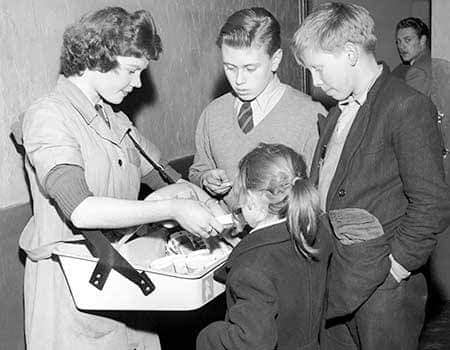
By the end of the 19th century experiments were taking place in America and by Friese-Green in Britain in the hope of projecting moving images onto a screen. The first cinema to appear in the UK was in Regent Street, London in the mid 1890’s with hand-cranked projectors showing silent scenes from everyday life ten times a day. Rochdale was not too far behind with six cinemas opening before 1920 and more in the following decades.
Chronologically, Rochdale’s cinemas opened across the first three decades of the 20th century.
The Hippodrome. In 1903 the Hippodrome, owned by Messrs Smith, Lee and Hargreaves showed simple animated pictures under the Pringles name although in 1905 it was also hosting variety acts, Grace Stansfield (Gracie Fields) winning a singing competition on-stage there in that year.
The Empire. Built in 1904 to reflect the gothic style of the Town Hall, this cinema was linked with the Hippodrome in its early days and became Pringle’s Picture Palace. It had a music hall-styled horseshoe balcony (Music Hall continuing there until 1910) but this, along with the proscenium, was changed in 1929 and the orchestra pit taken out to suit the re-named Empire De Luxe Cinema rather than theatre. As part of the decline of cinema nationally in the 1950’s, the showing of films was terminated and it became a Bingo Hall, then in 1995 a nightclub with the cinema balcony bricked-up.
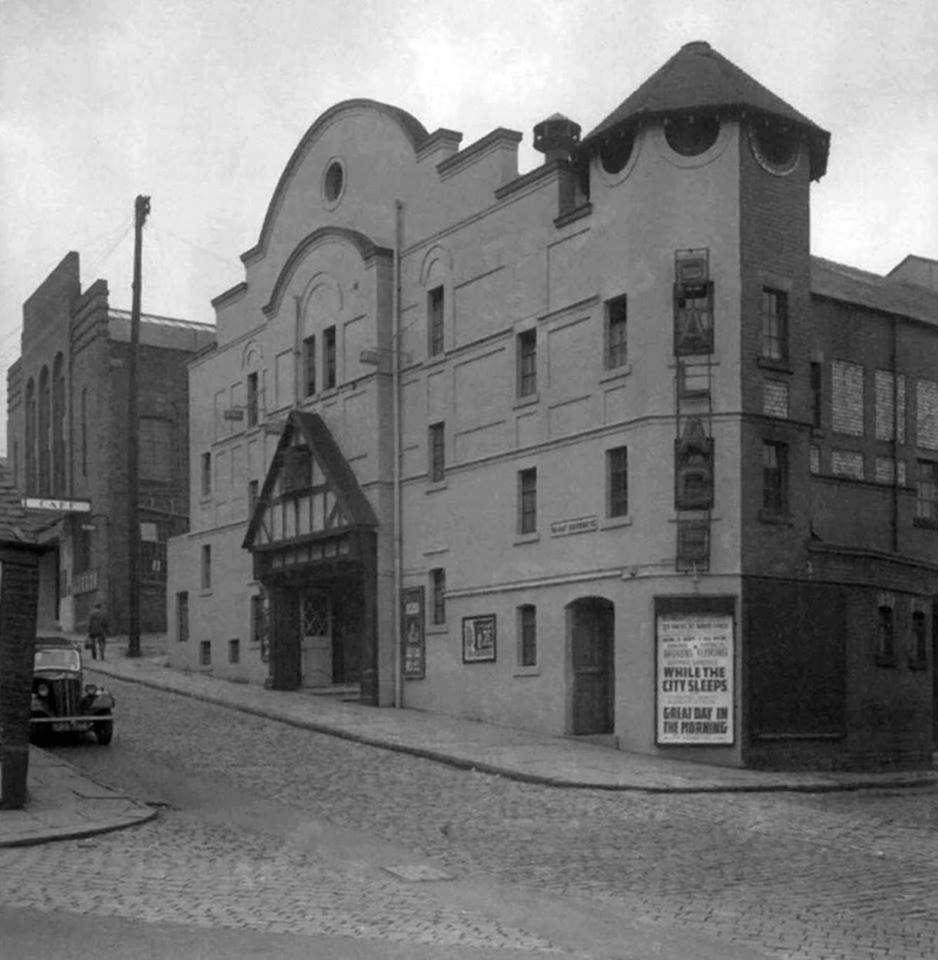
The Palace was located in George Street off Drake Street and opened in 1911. By 1922 The Palace had been taken over by the Northern Cinemas chain and in the 1930’s re-named the Palace Tudor Super Cinema. In turn it became part of the Essoldo chain in the 1950’s. Initially closed in 1968 it was later used to screen Bollywood films and on final closure as a cinema in 1981 it was converted into ‘Scene One’ night club which was partly destroyed by fire and then re-built as the ‘Xanadu’ night club which closed in 2002 after which the building was demolished.
The Coliseum Picture Theatre was built in 1911 at the corner of the High Level and Oldham Road next door to the then popular Palace Roller Skating rink. In the 1930’s ‘The Colli’ was equipped with an expensive RCA sound system but after many years of entertainment it closed in the early 1950’s and the building taken over initially by the Ford Motor garage but later demolished.
The Pavilion. Opened in 1912 as the Pavilion Picture Palace on St Mary’s Gate at the junction of Spotland and Bury Road it initially showed silent films but was host to the town’s first ‘talkie’ in 1929. The cinema closed its doors in 1963.
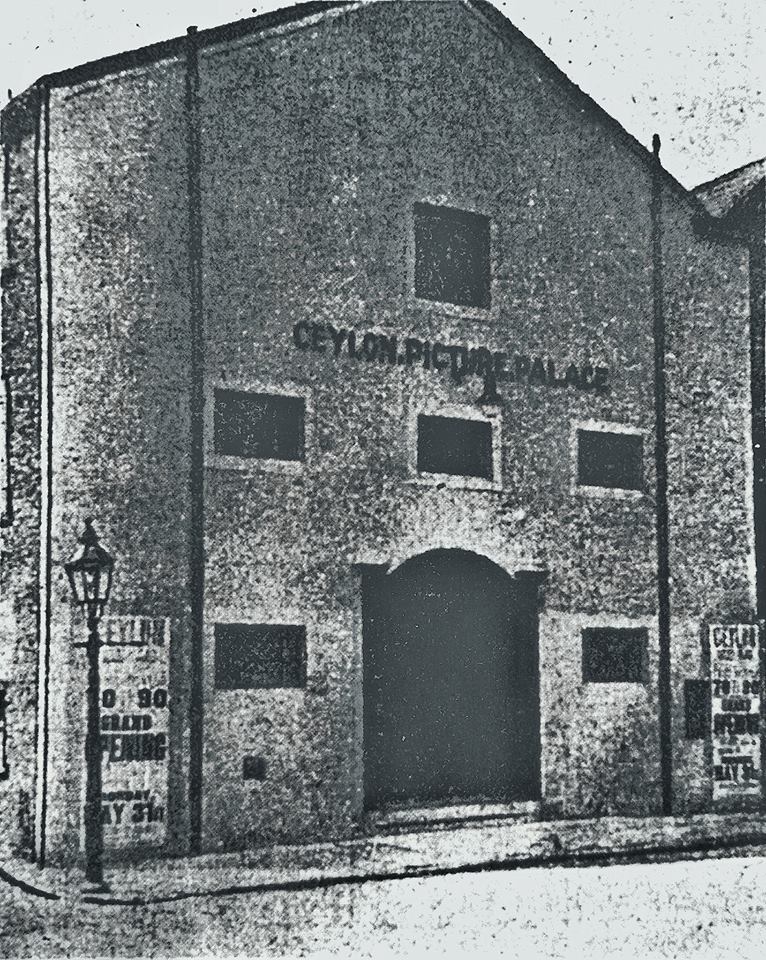
The Ceylon Picture Hall. This old cinema which opened in 1914 stood at the corner of Littlewood Street backing off Yorkshire Street and was a converted warehouse. It had a snooker hall upstairs and though it was re-furbished and re-named in the 1920’s as Ceylon Cinema De Luxe, by the end of the war it had reverted to being the Ceylon Cinema. Its last showing was ‘Flame of the Islands’ with Yvonne de Carlo in 1956 after which it stood unused for many years before being demolished.
The Princess in Castleton was another early picture house. Opened in 1914 it stood next door to The Ideal Cinema (1931) and at one time had the same telephone number ! Initially owned by A. E. Millward, ownership transferred to E. Woodall by the 1940’s. Reversing the usual transfer of use, the cinema in 1951 was acquired by the Catholic Church and became St Gabriel and the Angels with a new presbytery built alongside it in 1953. The Ideal next door was eventually taken over by a sheet metal company.
The Kings cinema, showing films from 1922, was located near to Lower Place. It had an impressive 32 feet wide screen area proscenium and was equipped with a Western Electric sound system. The cinema closed in 1969, initially becoming an Asian social centre and then a Bingo club, closing in 2013 as such.
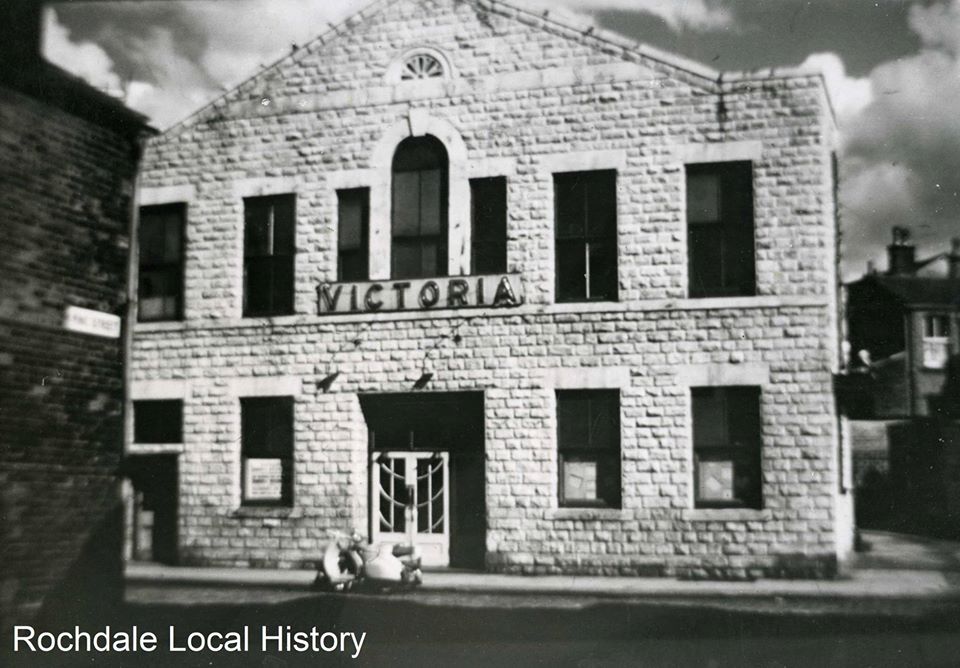
The Victory stood at the corner of Milkstone Road at Station Approach. Opened in 1925, it was early in promoting ‘talkies,’ showing Al Jolson’s ‘The Singing Fool’ in 1929. As a cinema it closed its doors in the late 1950’s after which the building was taken over by retail businesses.
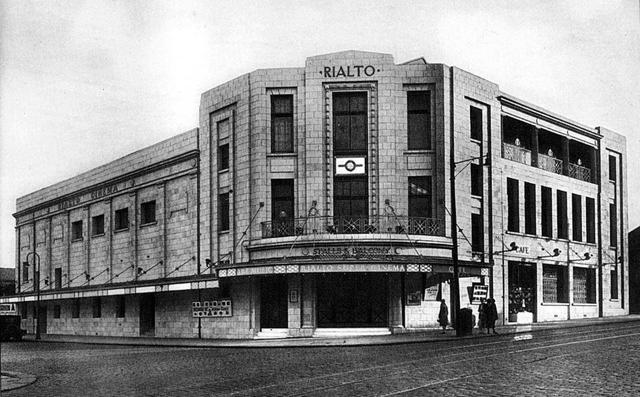
The Rialto (1928), later re-named The Odeon, was initially The Rialto Super Cinema with Grace Fields present at its opening. It had an impressive outer façade with cream faience tiling, its interior also stunning with marble floors, lined walls with painted panels of English scenes (one of Healey Dell). There was a café attached to the cinema decorated with scenes of the Rialto bridge in Venice. In 1955 ‘the Ri’ was equipped with Cinemascope and in 1959 re-named The Odeon under the Rank Organisation. Towards its closure, in November 1975, it was reported that youths threw fireworks inside the cinema, setting fire to the stage curtains and part of the screen. The cinema closed soon after this event (it was due to close anyway) and never re-opened. The building was demolished in the mid 1980’s.
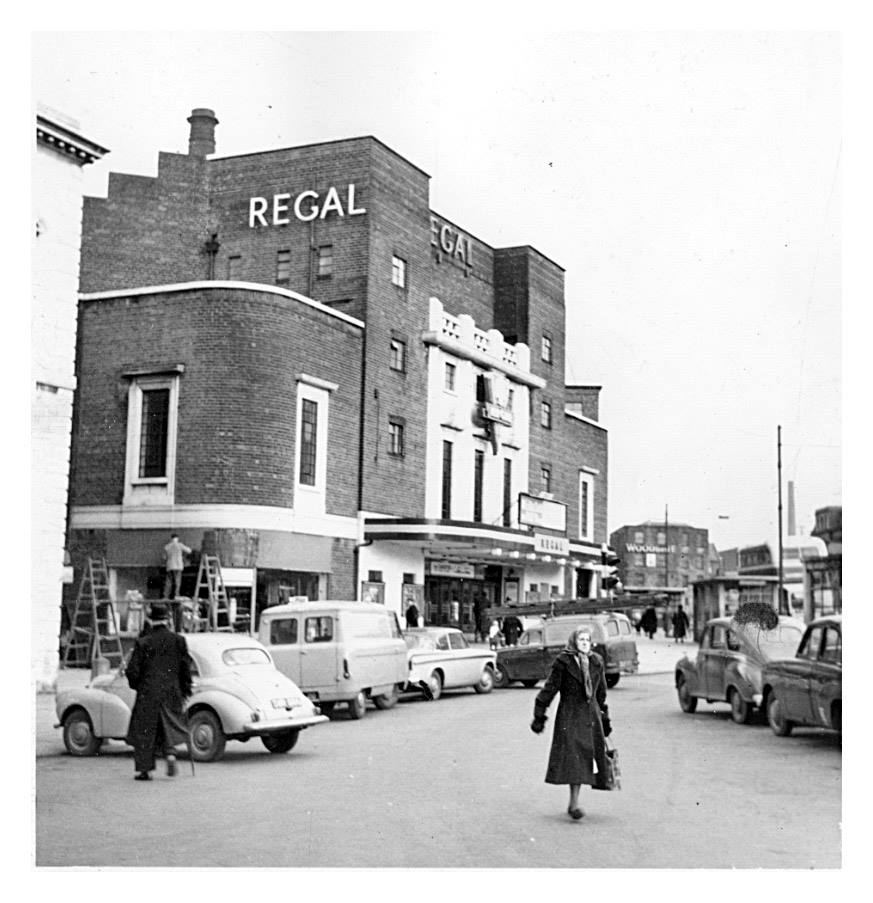
The Regal on The Butts was the last cinema to be built in the town centre in 1938. The art deco style building was designed by the architect Leslie C. Norton to hold 1901 seats, two thirds in the stalls and one third in the balcony. It was re-named the ABC in 1962 and closed for three months in 1978 as it was converted into a three-screen cinema. It became the Cannon in 1986 and closed as a cinema in 1992, first becoming a Bingo Hall and then operating as The Regal Moon from 1997.
The 1960’s and 1970’s witnessed a dramatic drop in cinema attendance partly due to popular ownership of TV sets as home entertainment. Video rentals in the 1970’s and latterly DVD sales further marginalised cinema-going although the rise of the multiplex has, to some extent, reversed this trend. Even so, the era of going to the pictures with a great choice of double-header films will be remembered with fondness by many in the town.
